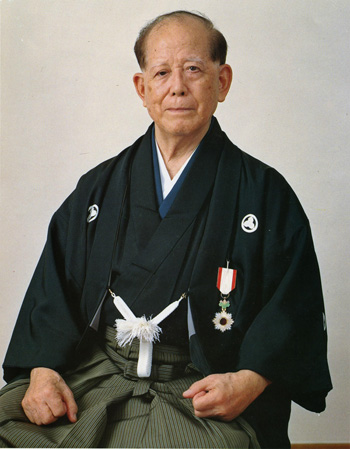 Fukyugata Ichi
Fukyugata Ichi
Ichi- A brisk left turn, down block in low stance.
Ni- Execute a middle punch in high stance…….
No doubt, the whole Kata is thorough with us by doing it endless times from our white belt classes and is continuing. This is the most basic kata for all Guju-Ryu, Shorin-Ryu and many other systems of Karate. Our mind and hearts are so imprinted with the block-punch timing, know when we shout Kia… and to the final rei. Well, everything has been deeply stored in our muscle memory as well. But how many of us know the background of this Kata? What is the meaning and how did it originate….?
Fukyugata = promotional Kata
Fukyugata is the combination of two Japanese terms – Fukyu and Kata, where Fukyu means promotional or introductory. When Kata combines with Fukyu the sound changes to "gata" and finally becomes "Fukyugata". There are two versions of Fukyugata – Ichi (First) and Ni (Second). The first one of these series was created by Hanshi Shoshin Nagamine (1907 - 1997), the founder of the Matsubayashi-Ryu Karate system.
The need of a promotional Kata
In the post-war period in Okinawa, as Karate was getting popular among the general public and was introduced to schools, there arose a need for a systematic syllabus which had to be taught at every level of Karateka (Karate practitioners ). Traditional Katas were long, complex, and required some level of dexterity to perform, a straight-forward Kata was required for the Karate curriculum. Upon Governor Hayakawa’s request, Sensei Nagamin developed a promotional Kata for beginners in 1940, comprising all the basic elements. However, the kata was accepted and ratified by the Special Committee in June of 1941. And this is the only Kata Nagamine sensei created in his 75 years of karate life. From this, we can understand how carefully and strategically this Kata was created.
Kata Dissection
|
Kamai |
: |
Musubi Dachi |
|
Movements |
: |
21 |
|
Directions |
: |
8 |
|
Stances |
: |
Forward Stance (Zenkutsu Dachi) Straight Leg stance (Choku Dachi) |
|
Punches |
: |
3 - lunge punches (Oi-Tsuki), 4 - Reverse punches (Gyaku Tsuki), 2 - Upper punches (Jodan Tsuki) |
|
Blocks |
: |
7 - Down Blocks (Gedan Barai) 2 - Upper blocks (Jodan Uke) |
Kata Strategy
Being the first promotional kata, it was strategically designed in a defence-attack manner. That means each of the movements in the Kata is a response-reaction or a block and punch scenario. To design this first promotional kata simple and also straightforward, the founder has avoided kicks and other advanced techniques that need more dexterity. Altogether, there are 21 movements in 8 directions in this Kata, having basic down block, upper block, lunge punches, and reverse punches with only two basic stands, namely Zenkutsu Dachi (forward bend stance) and Choku Dachi (straight leg stance).
The Kata starts with Musubi Dachi (heel touched together and toes pointing 45 degrees outside) and ends with drawing the leg back to the Kamia position in Musubi Dachi. Unlike all other Seibukan katas, the Fukyugata is a perfect symmetrical kata, having mirrored movements on both sides, consisting of Geden barai in Zenkutsu Dachi, Jodan Uke, and punches in Choku dachi. And it also addresses 8 directions of defences / attacks.
The acceptance of the Kata
Being simple and straightforward compared with Okinawan traditional katas which are long and complex, this kata has been well accepted by beginners, especially the foreign students, the majority were American army men at that period. This helped to transport and popularize the new Karate-do into other countries like the United States, Canada, South America, and Europe.
Winding up this short summary with “Shomen-ni-rei” to the great Hanshi Shoshin Nagamin, the founder of Fukyugata and Matsubayashi-Ryu, author, soldier, policeman, and the ex-mayor of Naha, Okinawa.